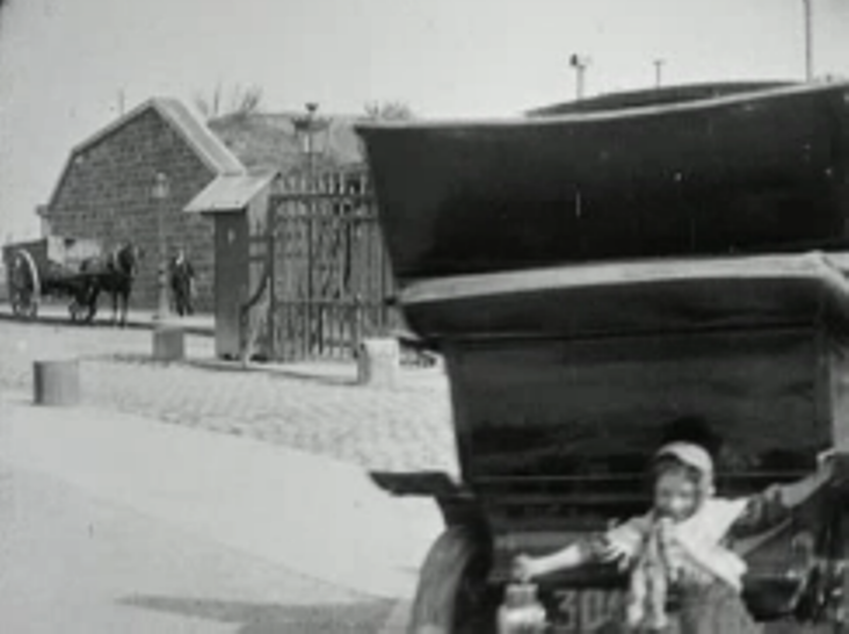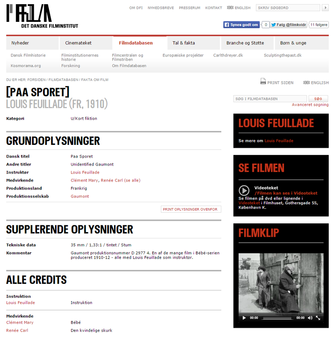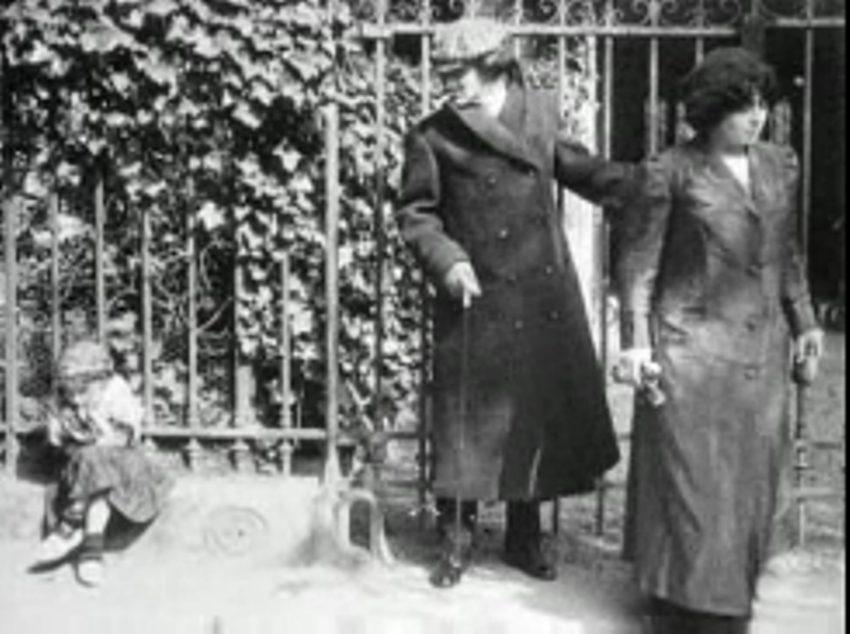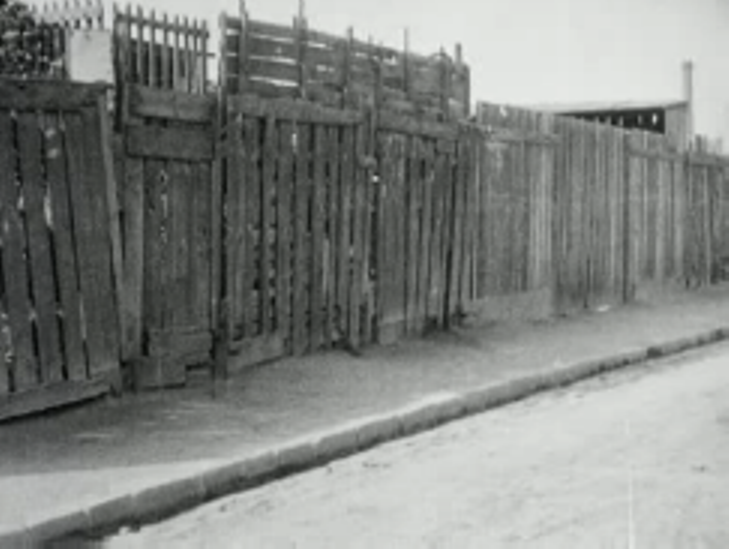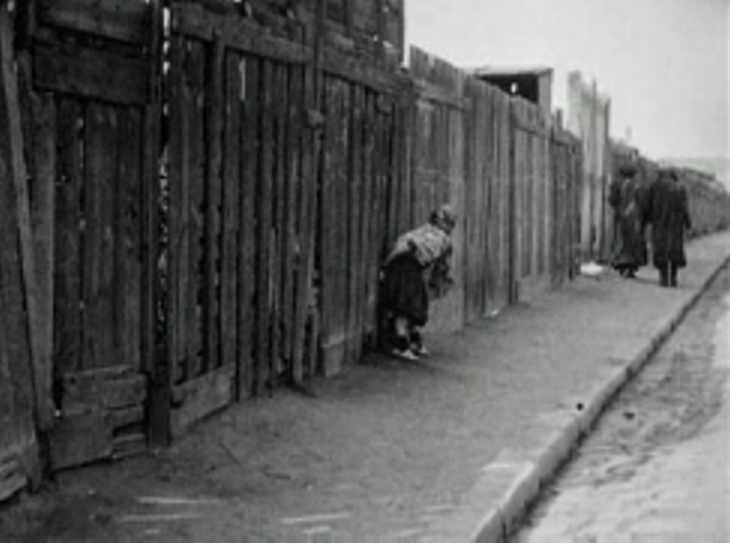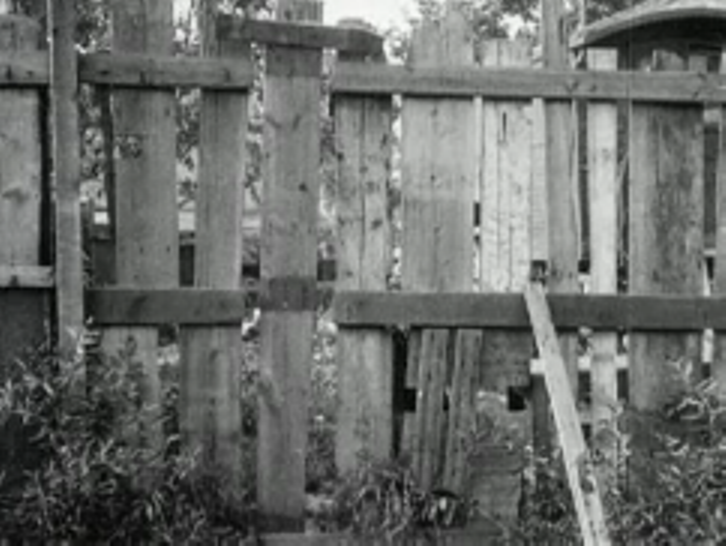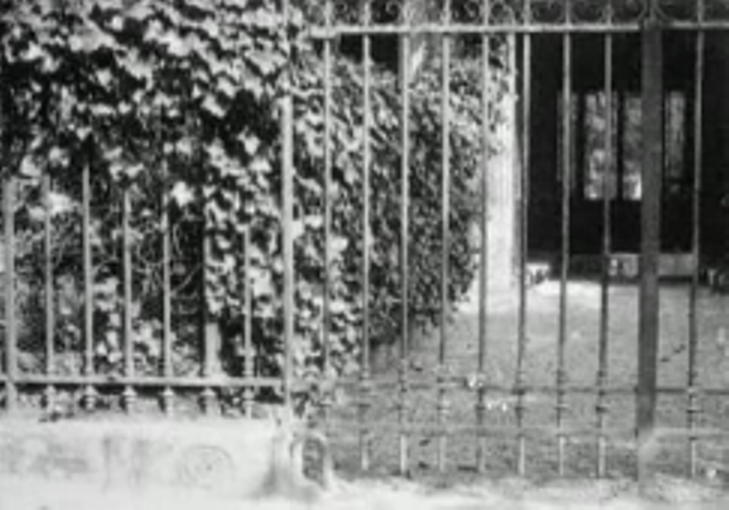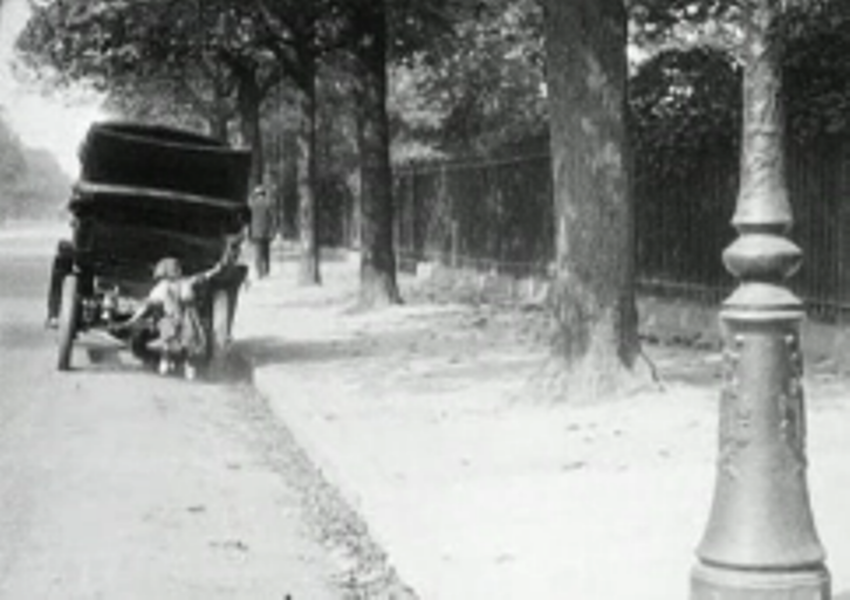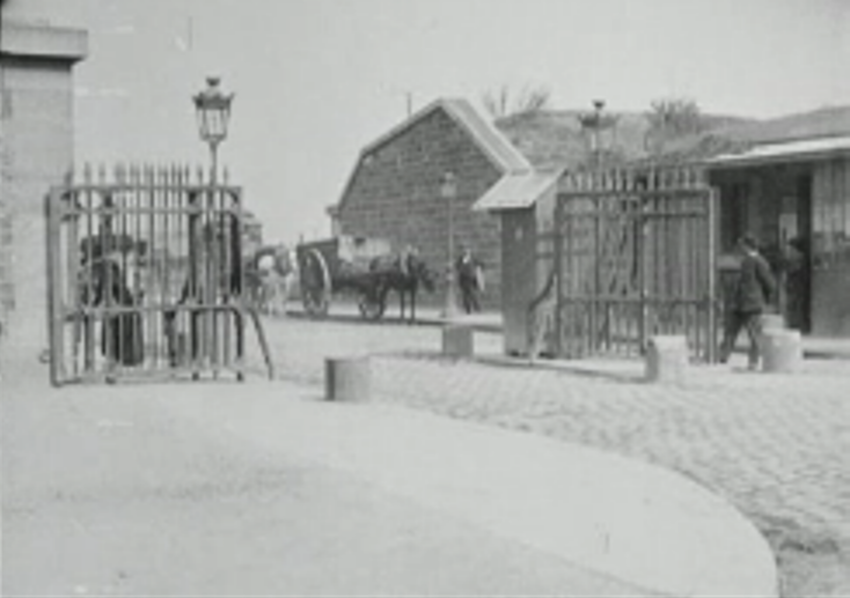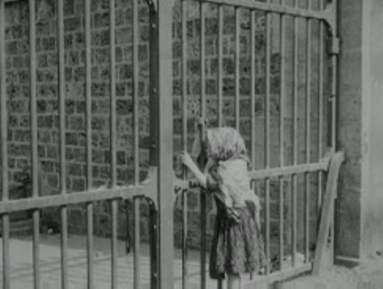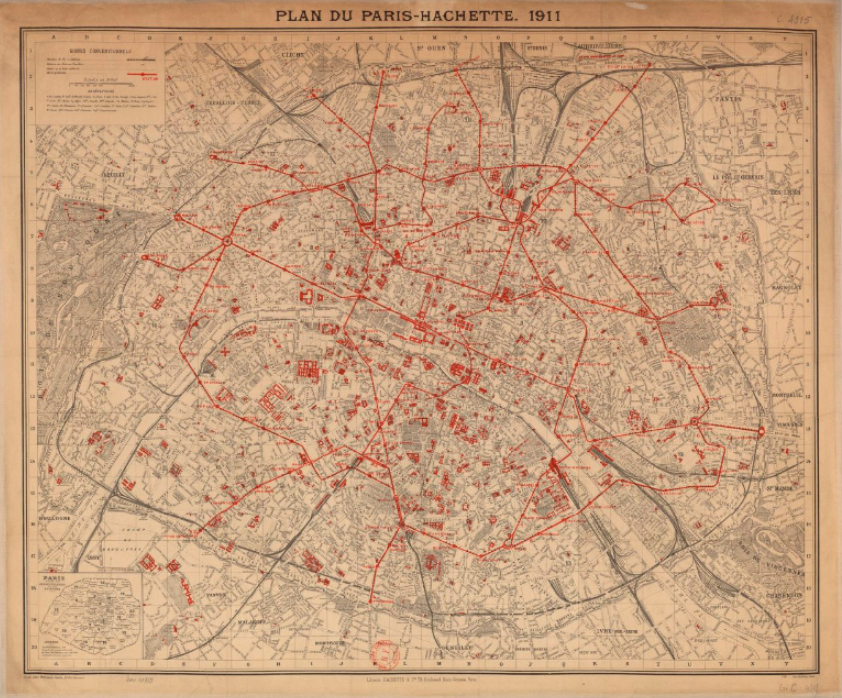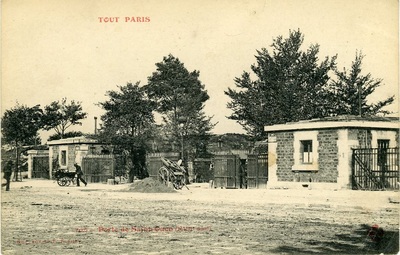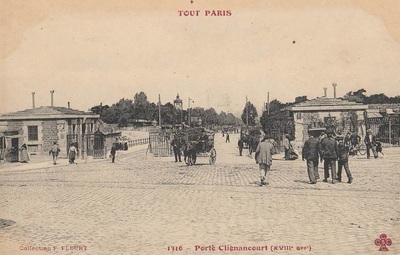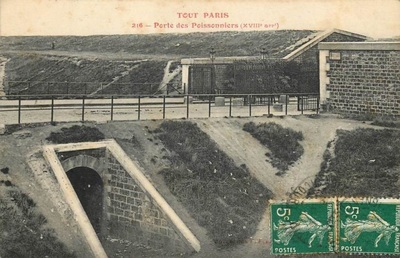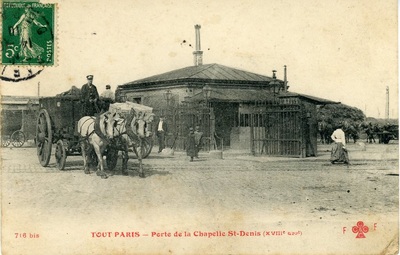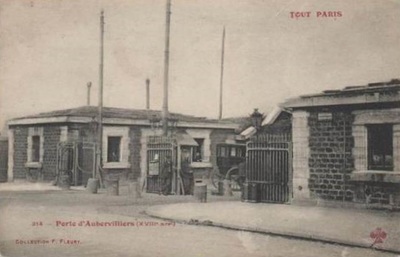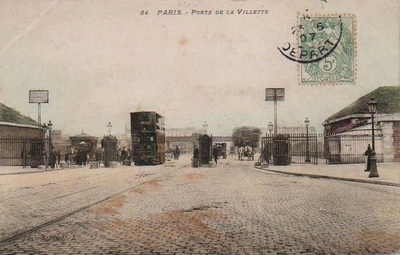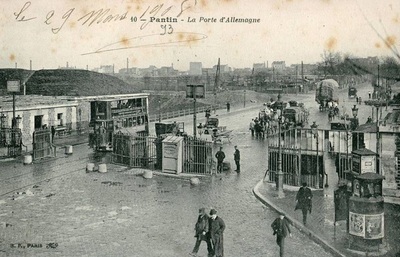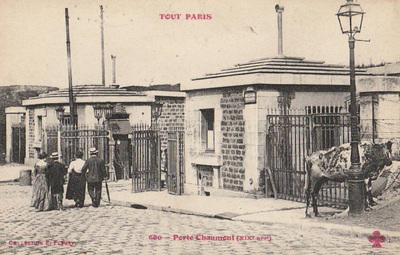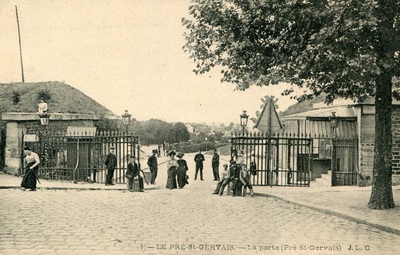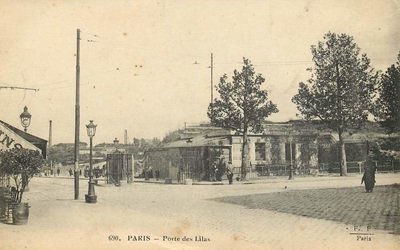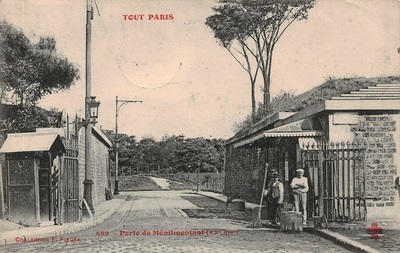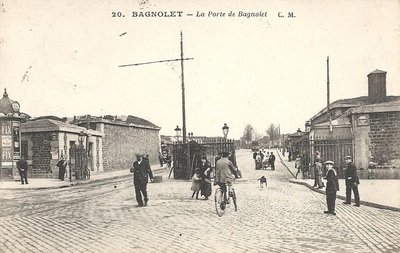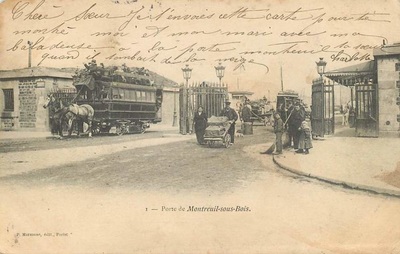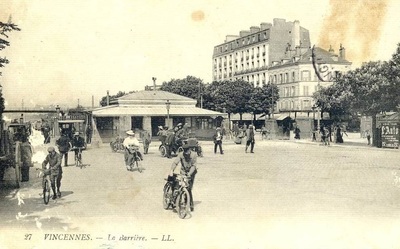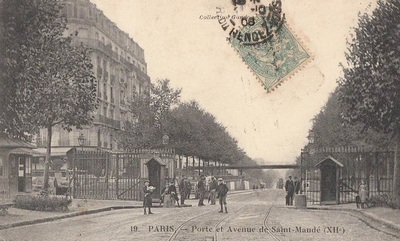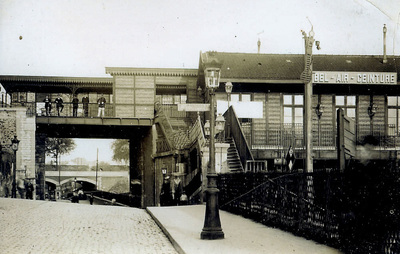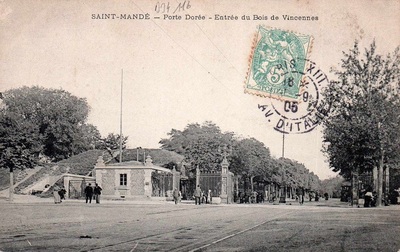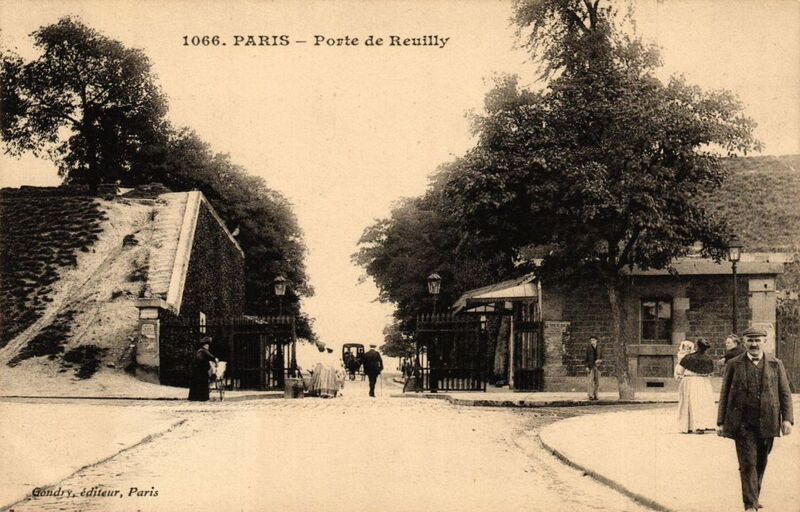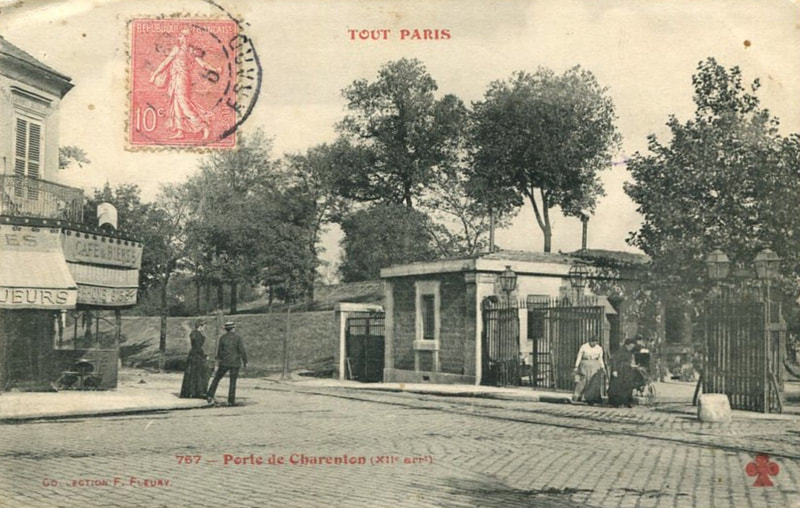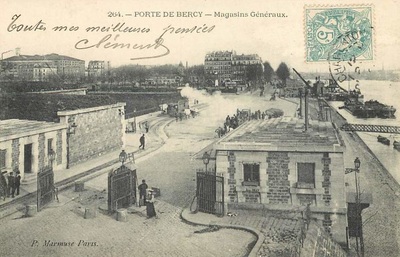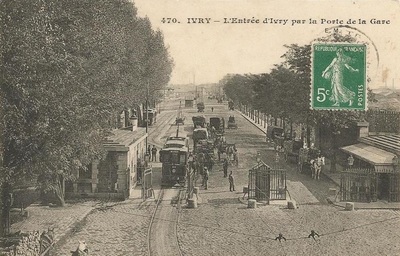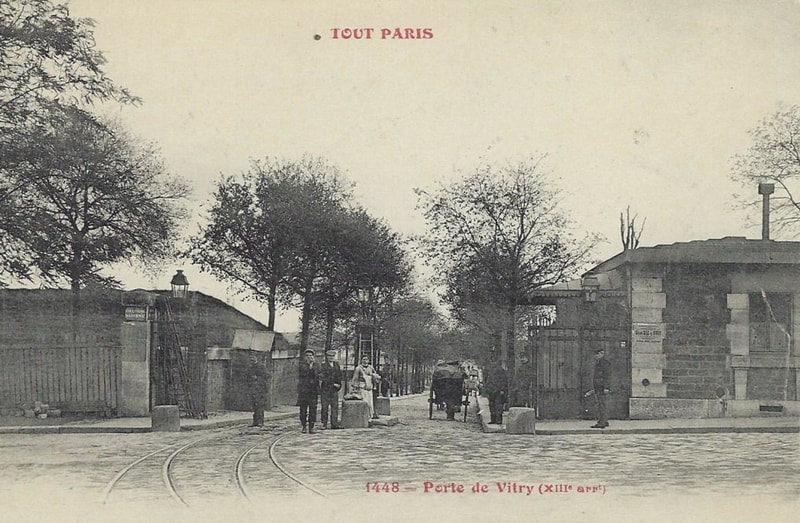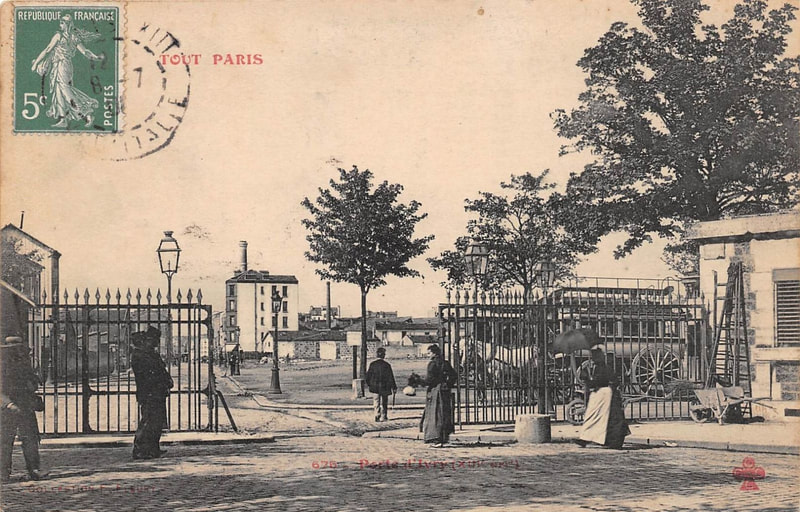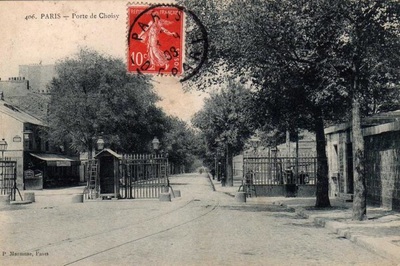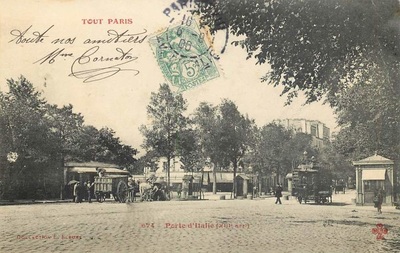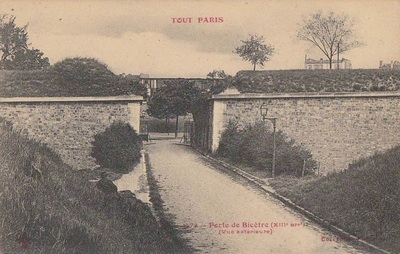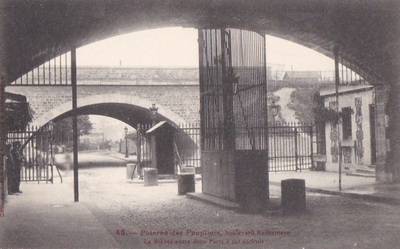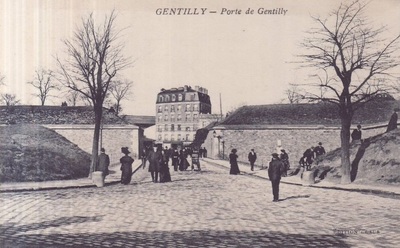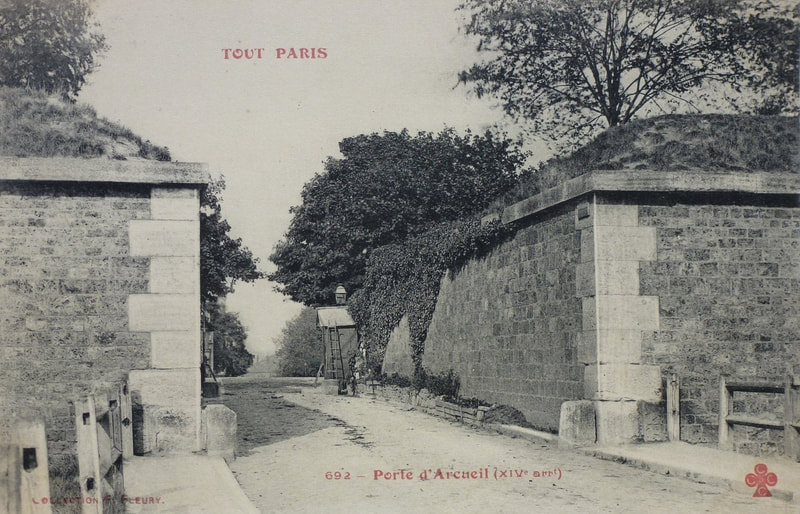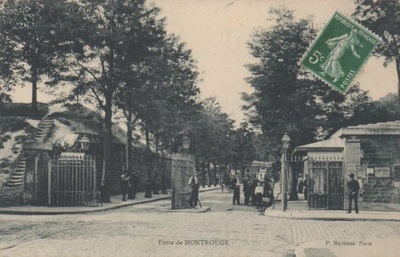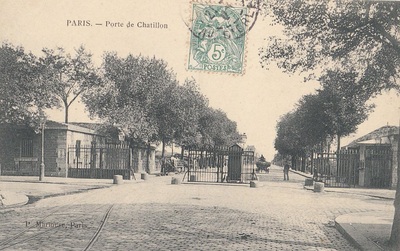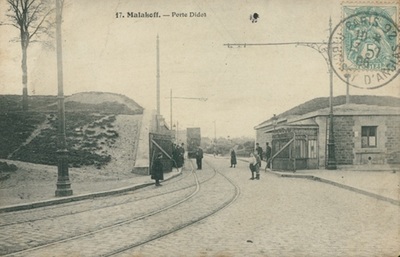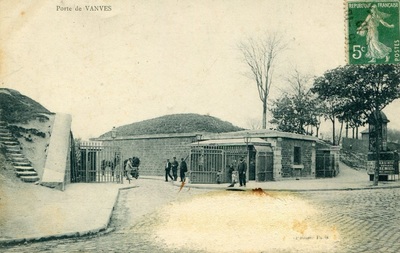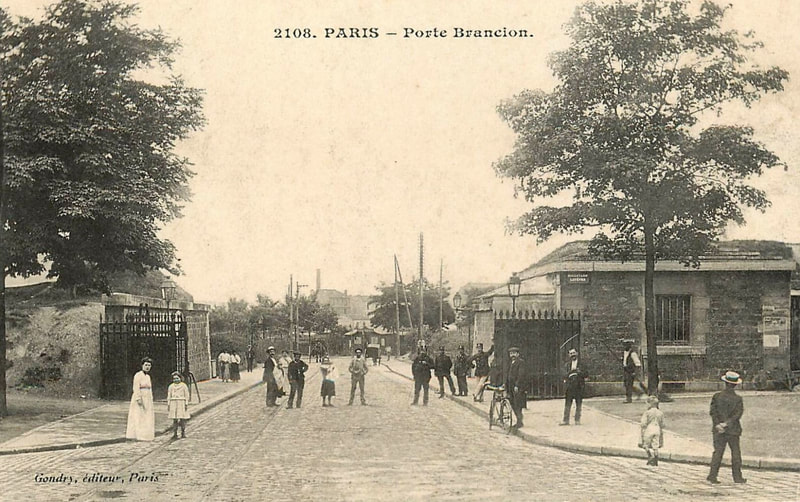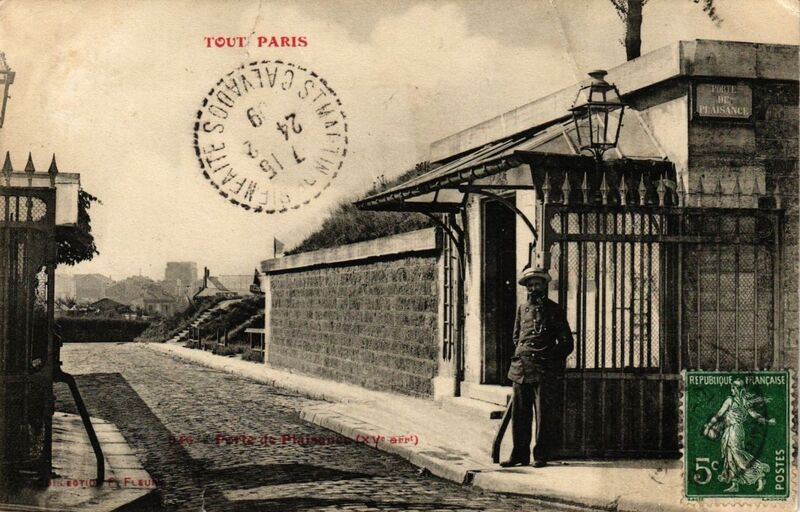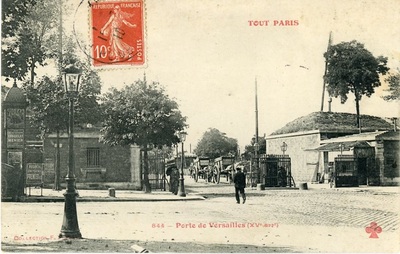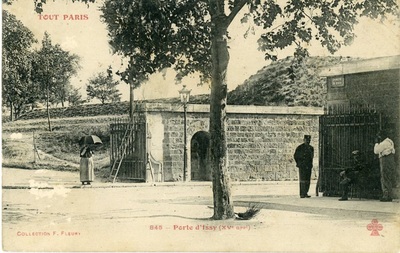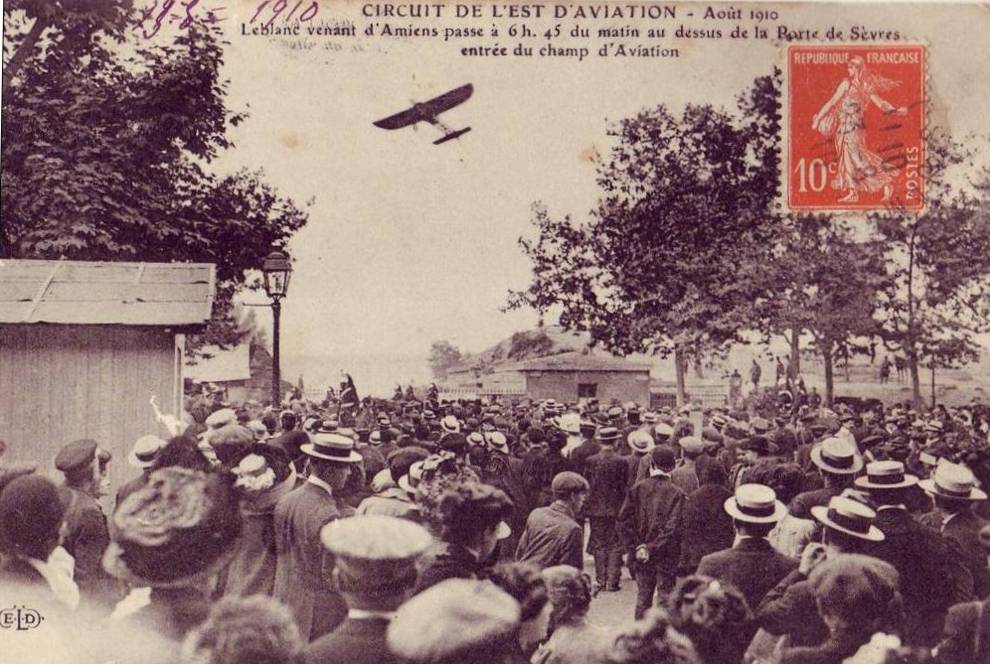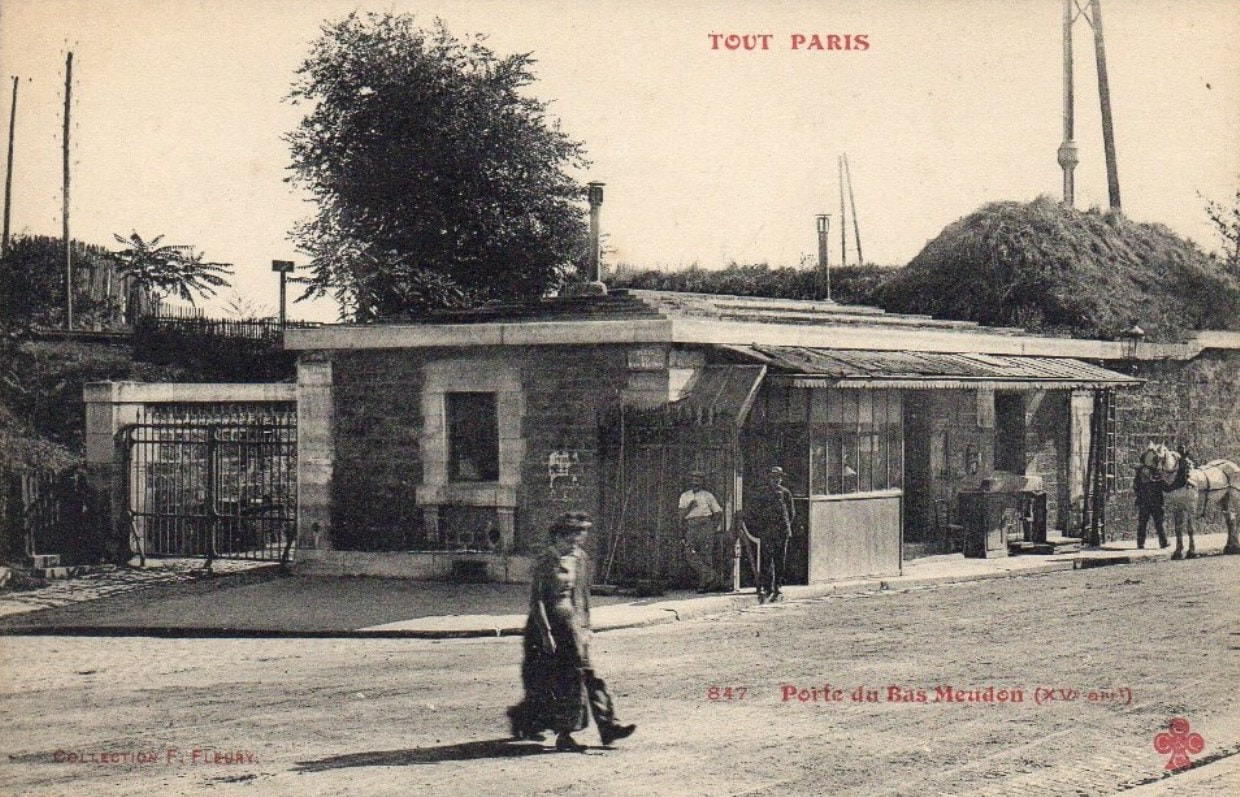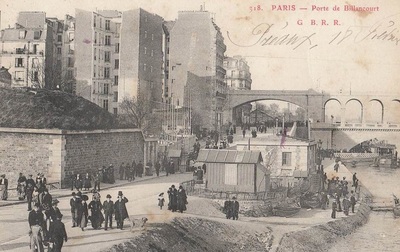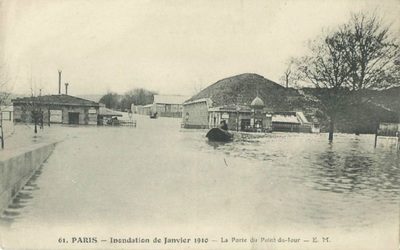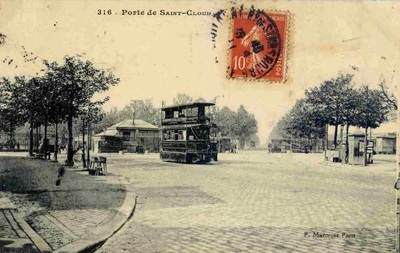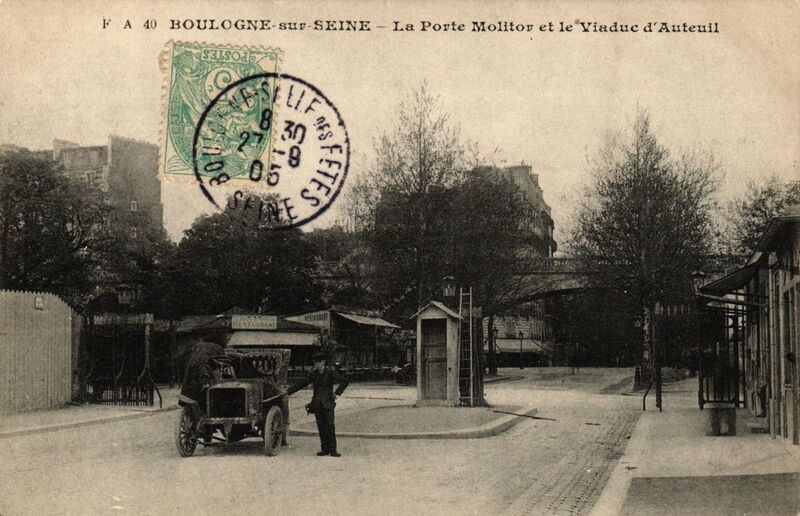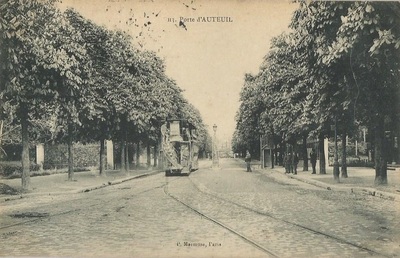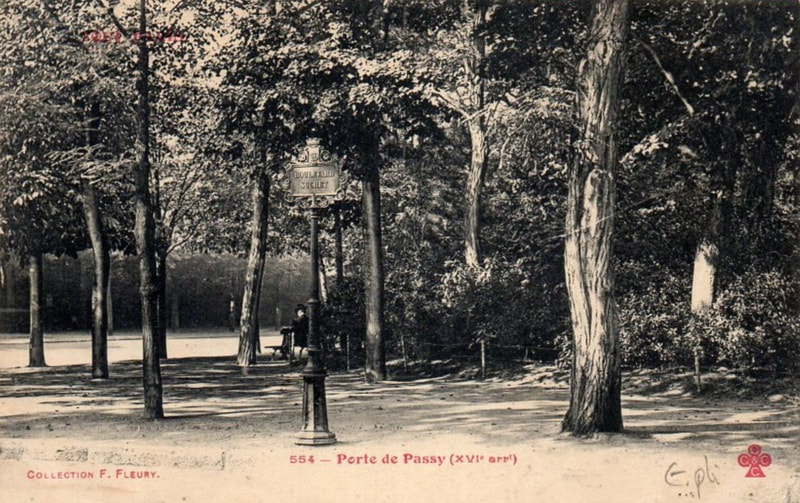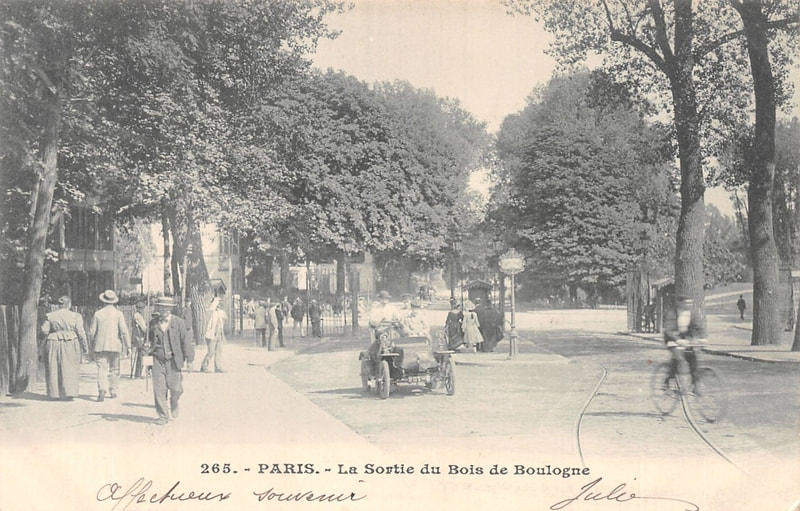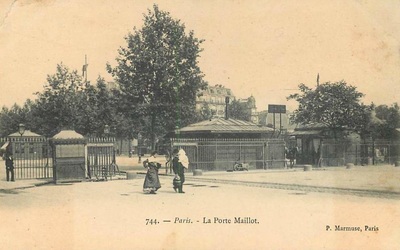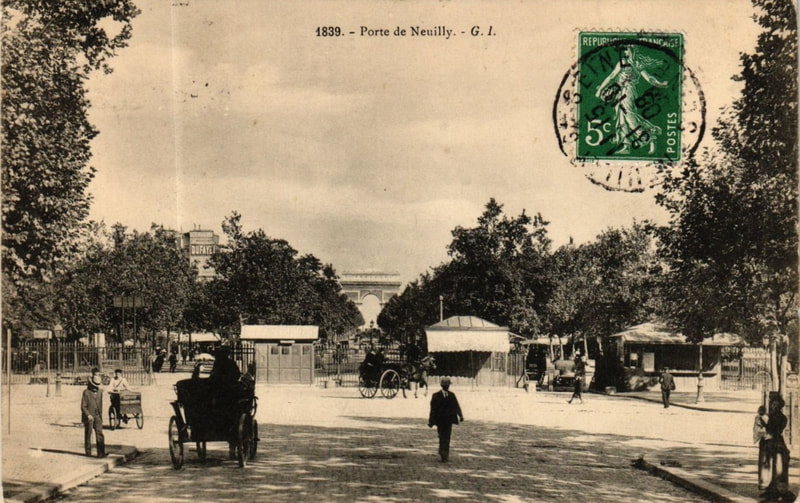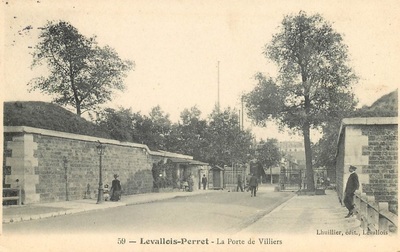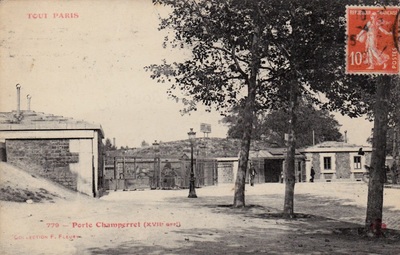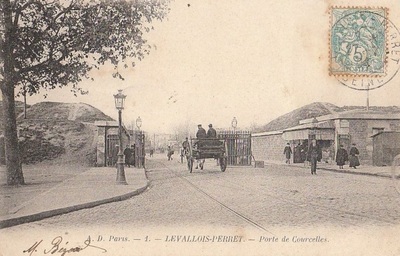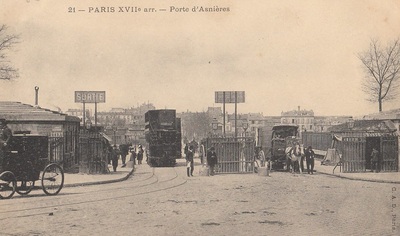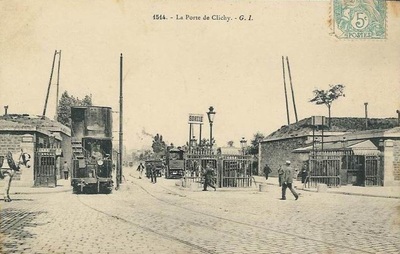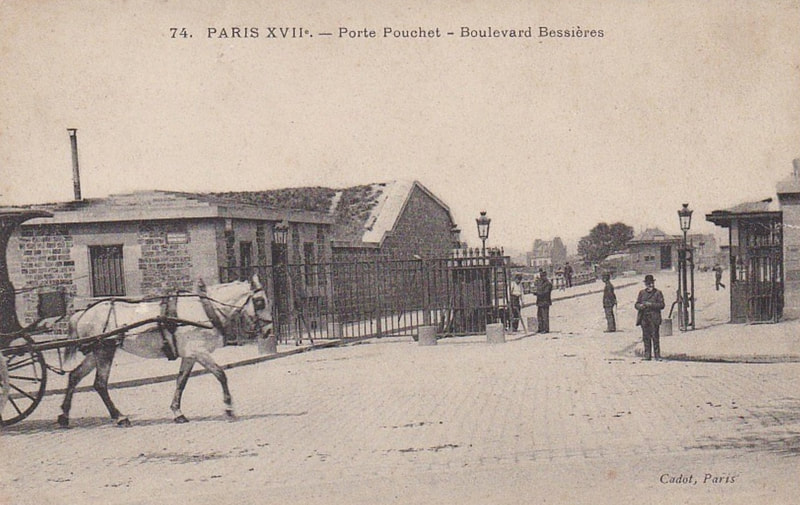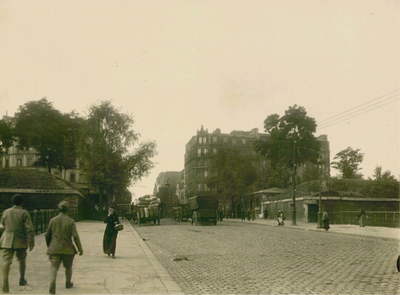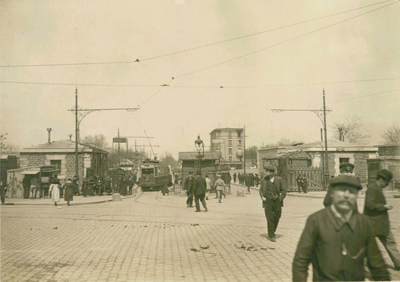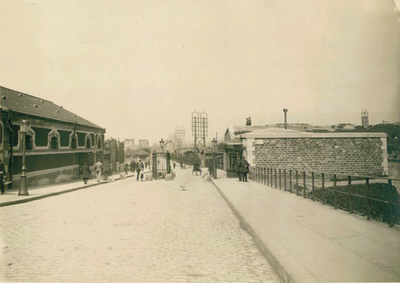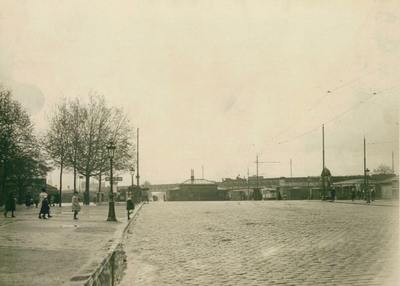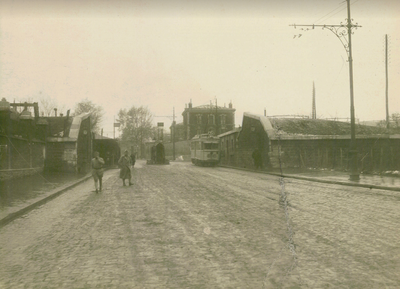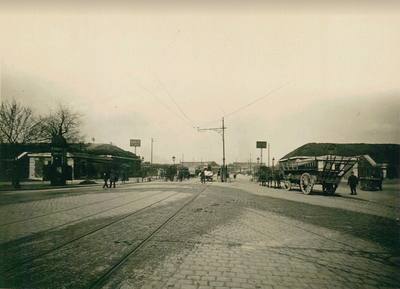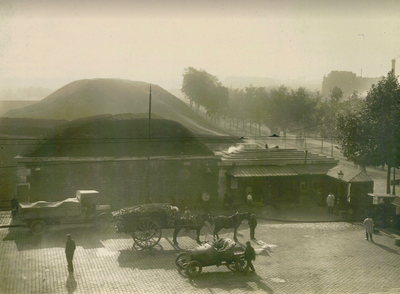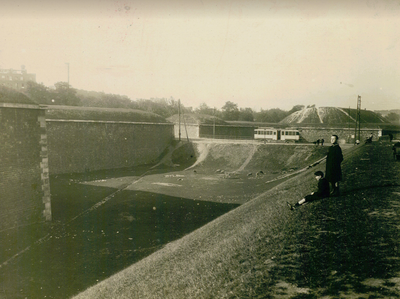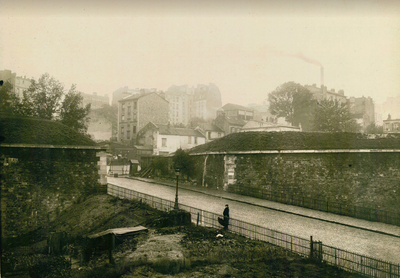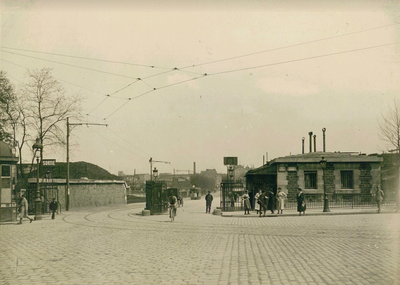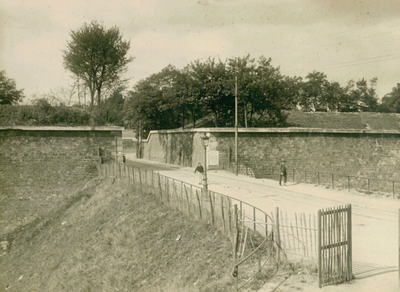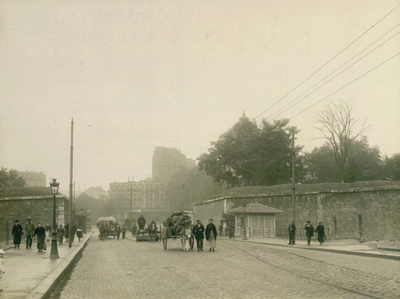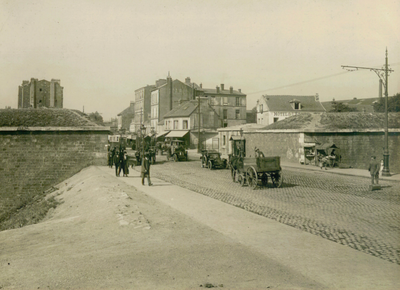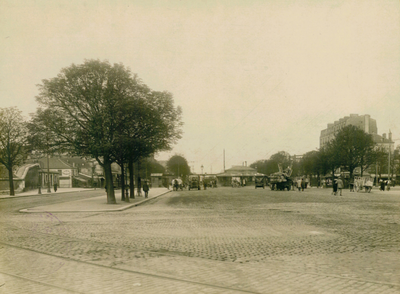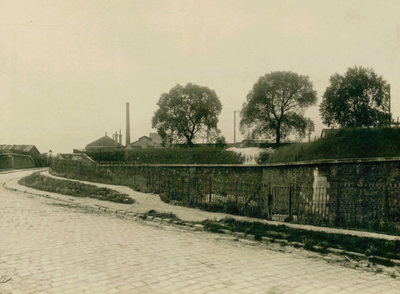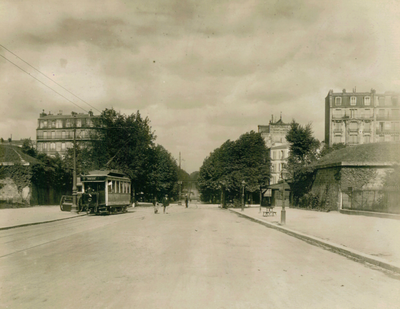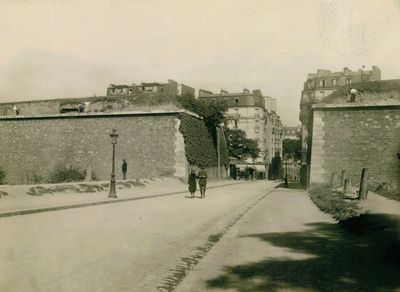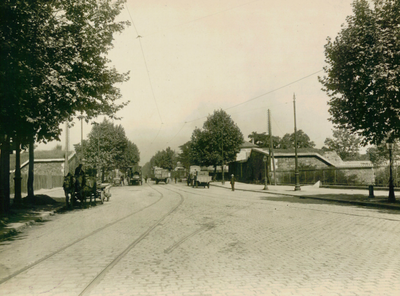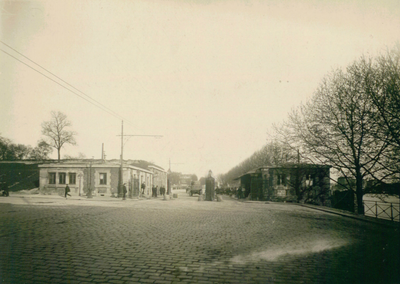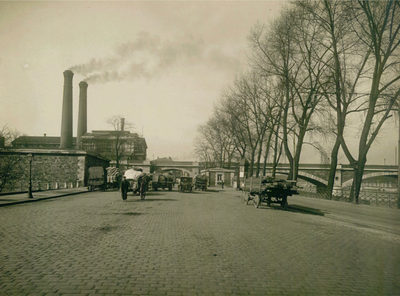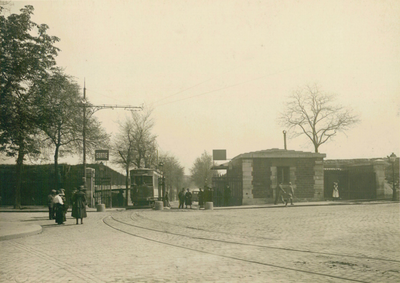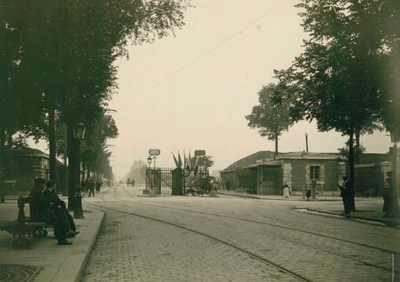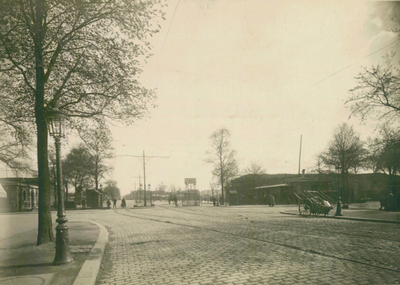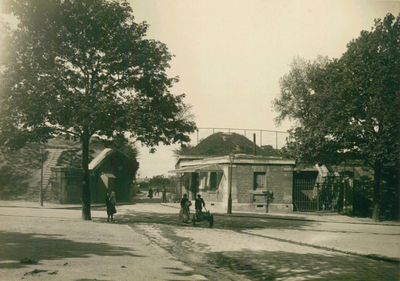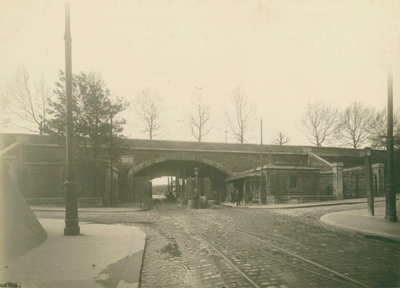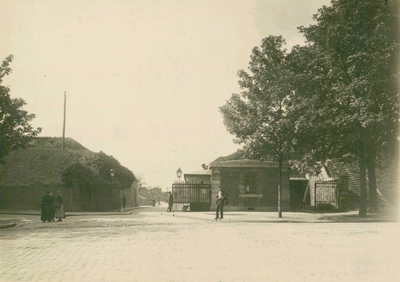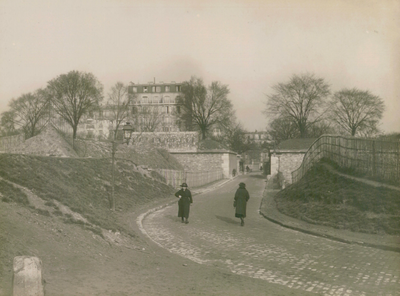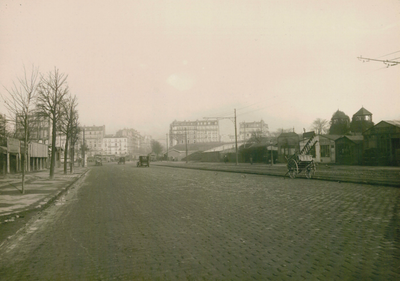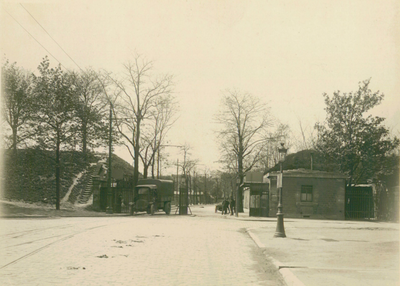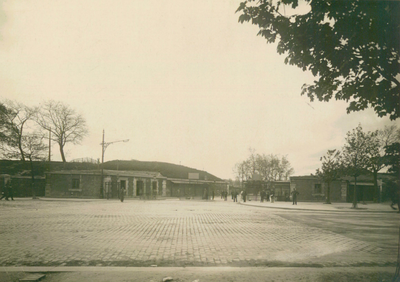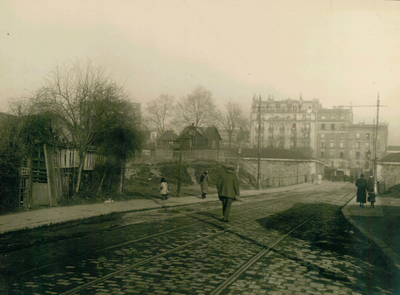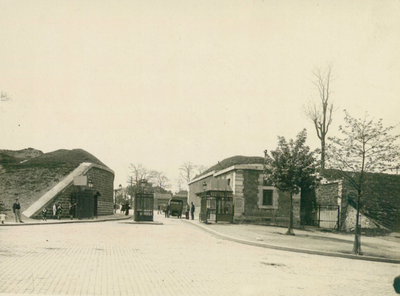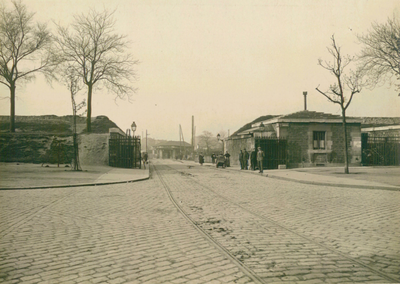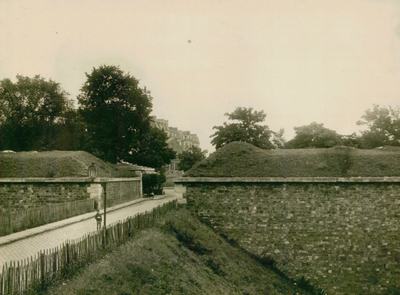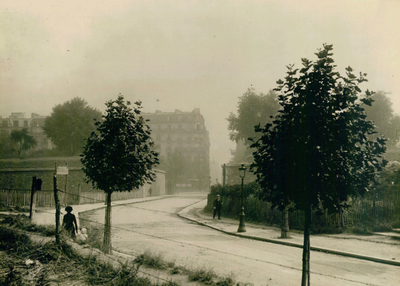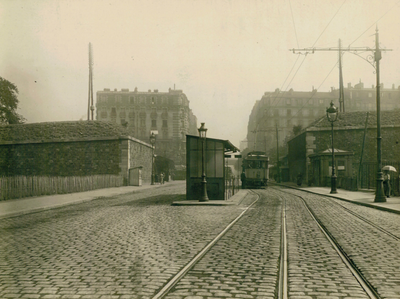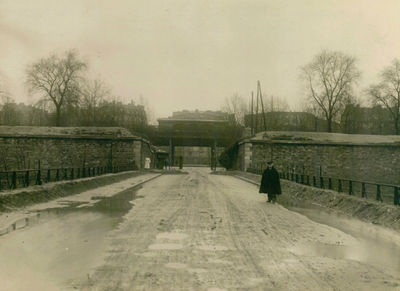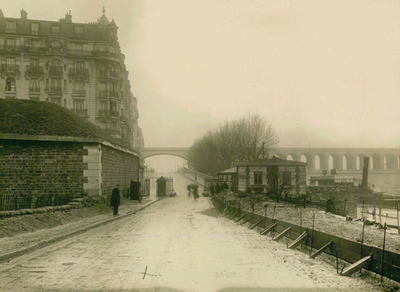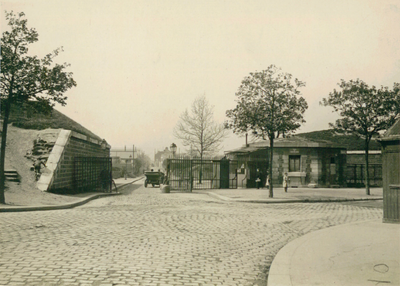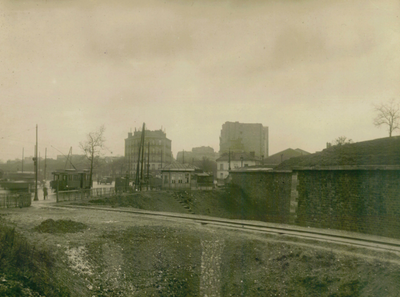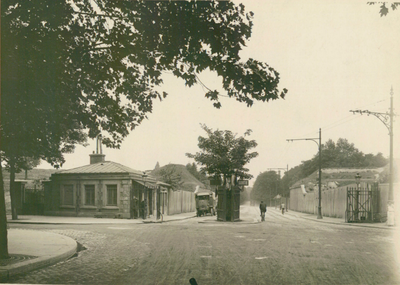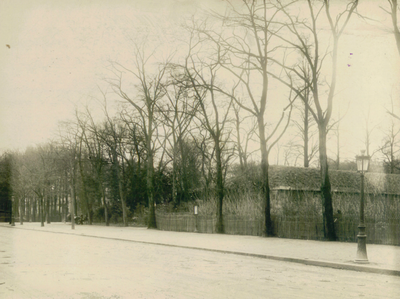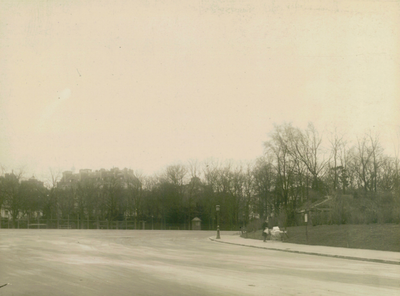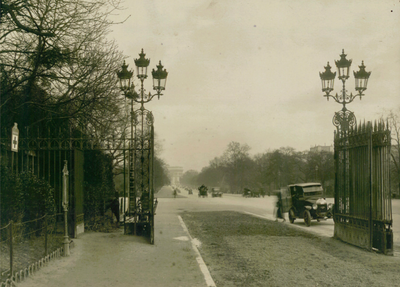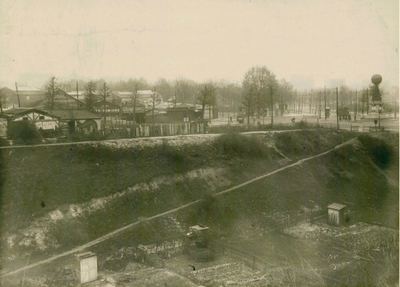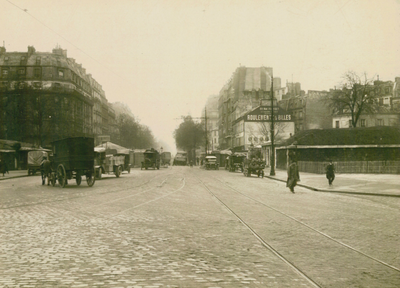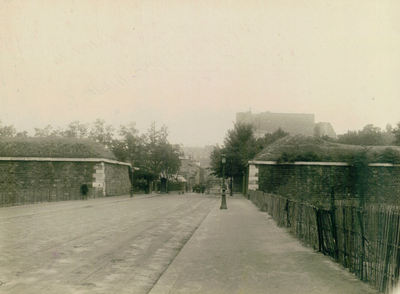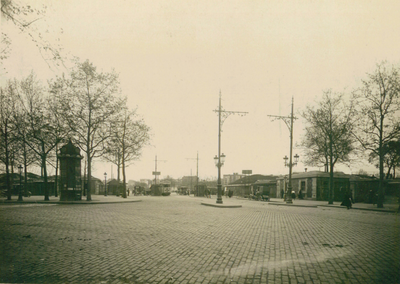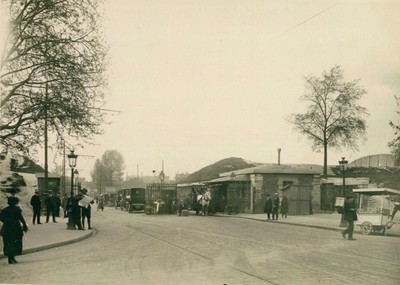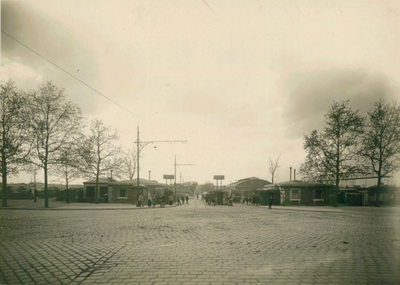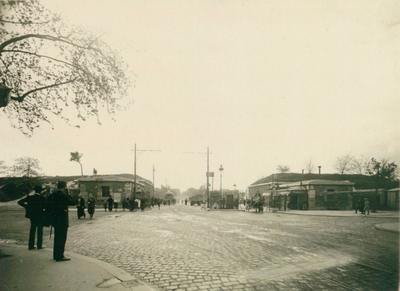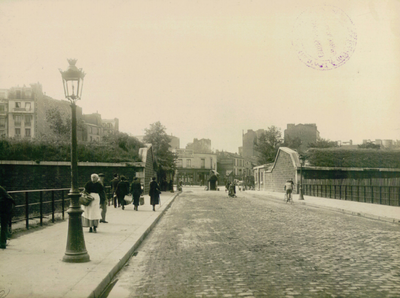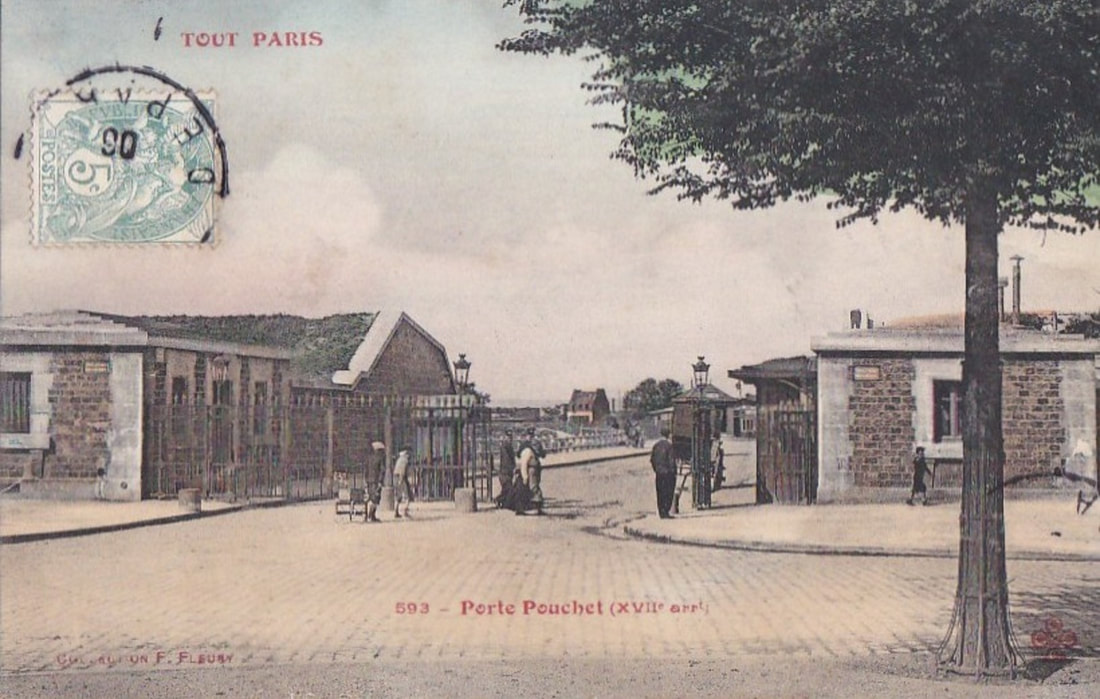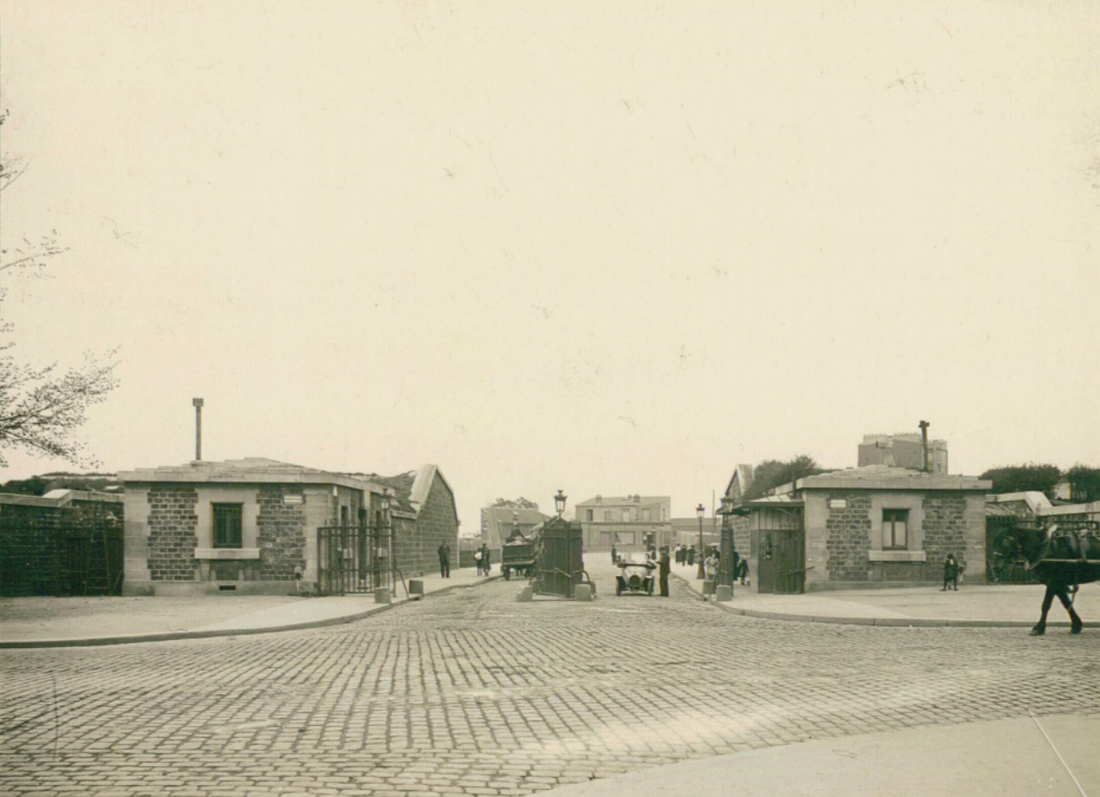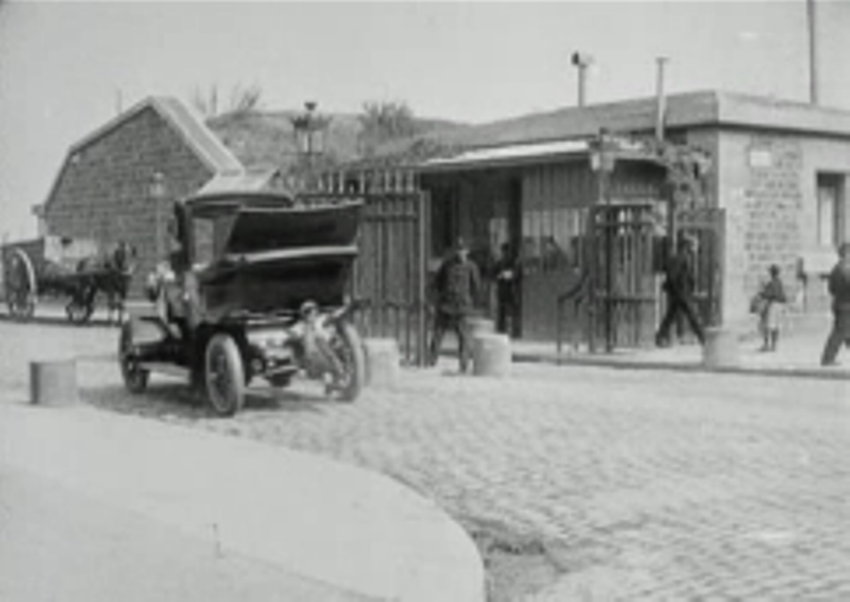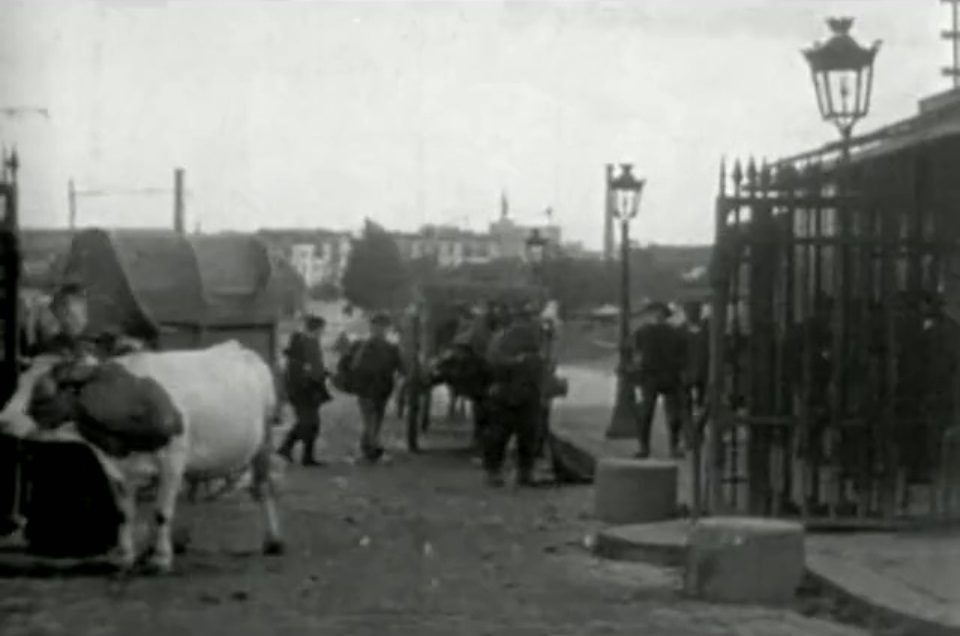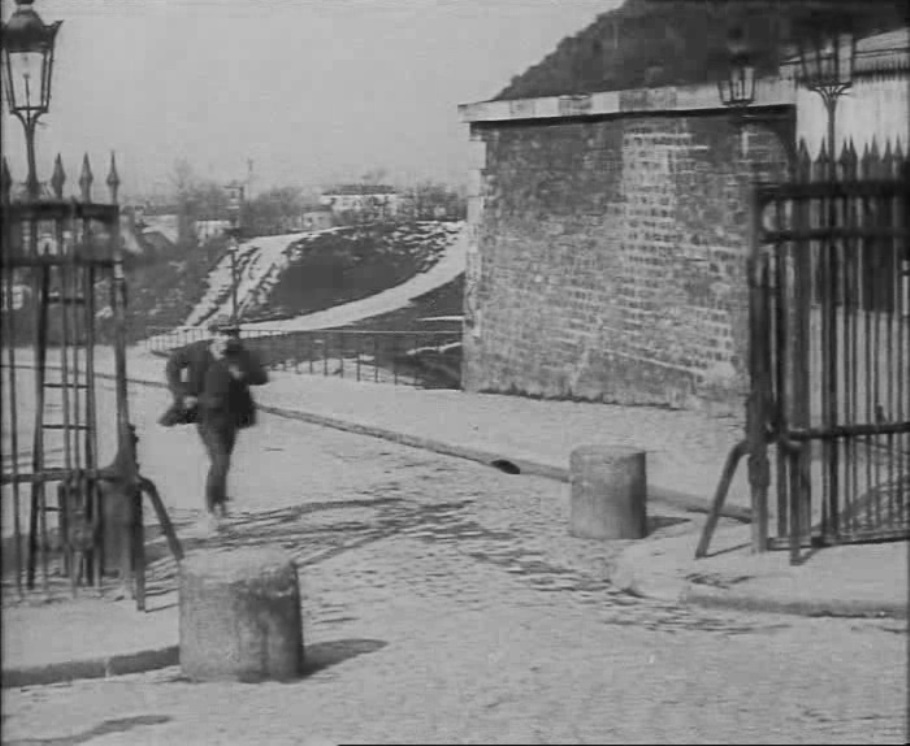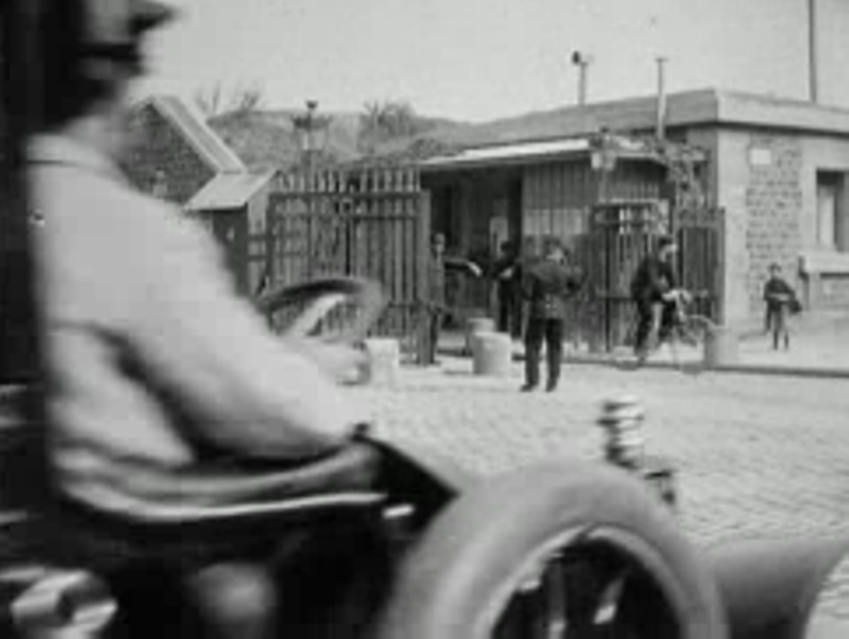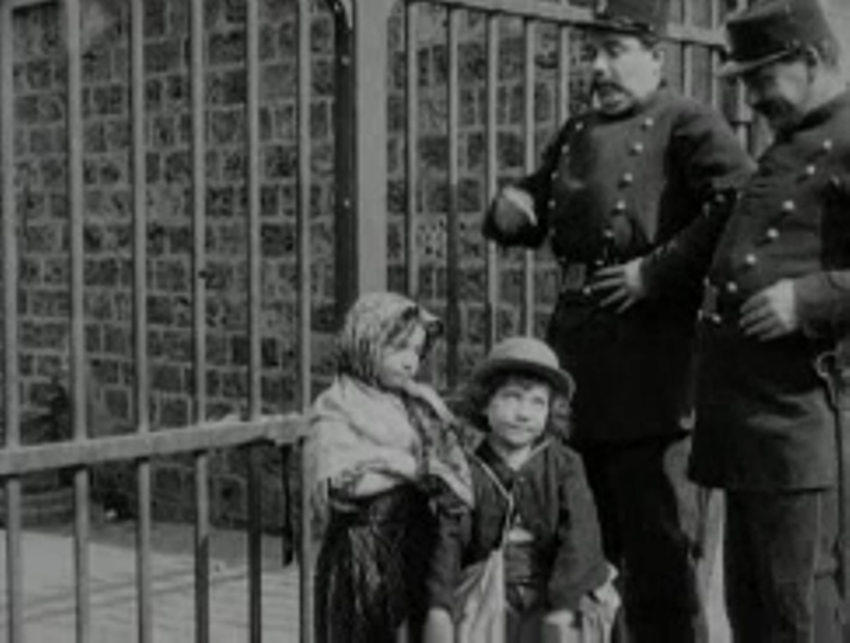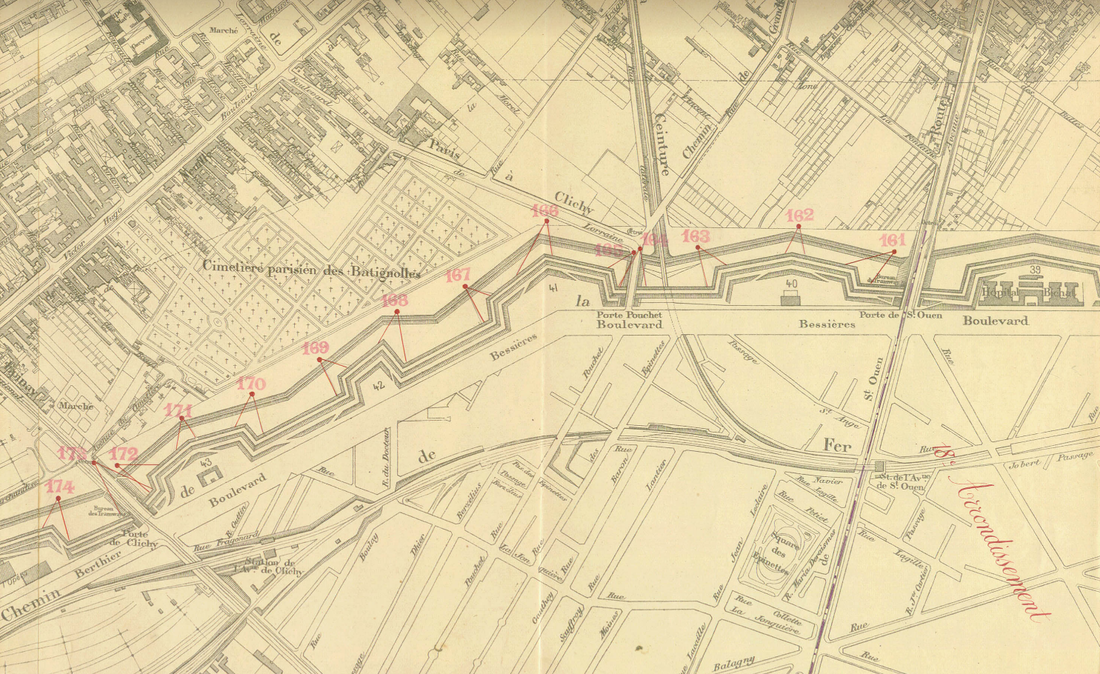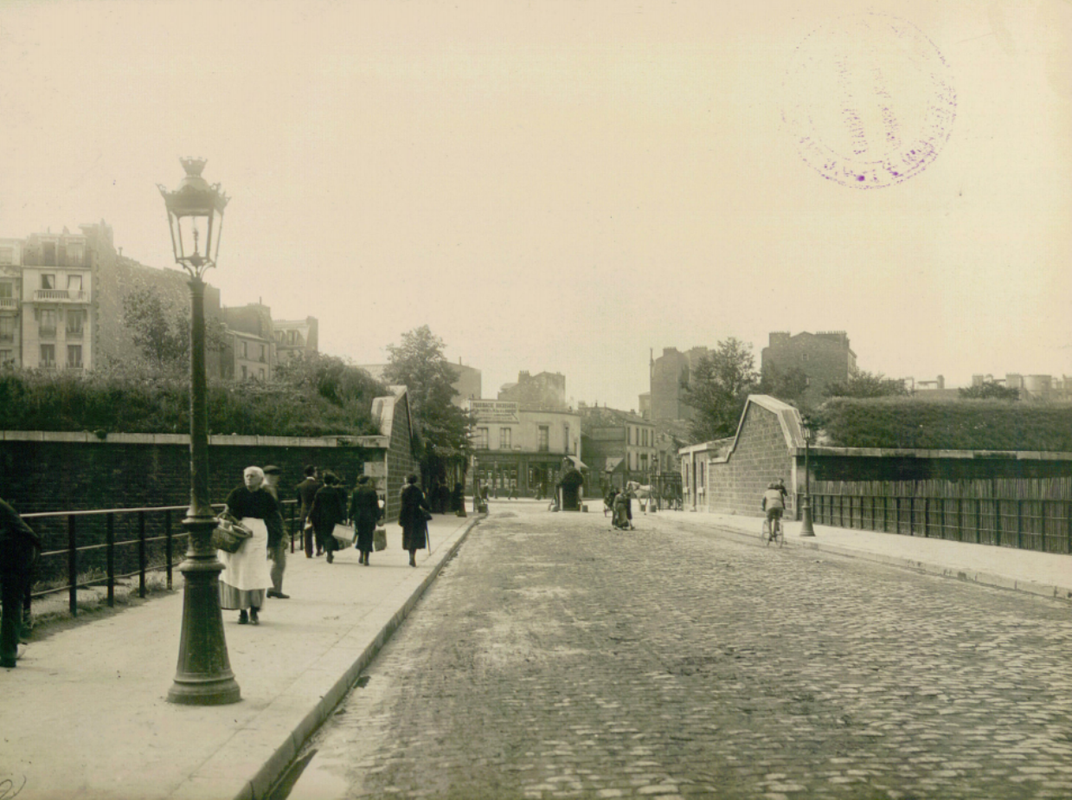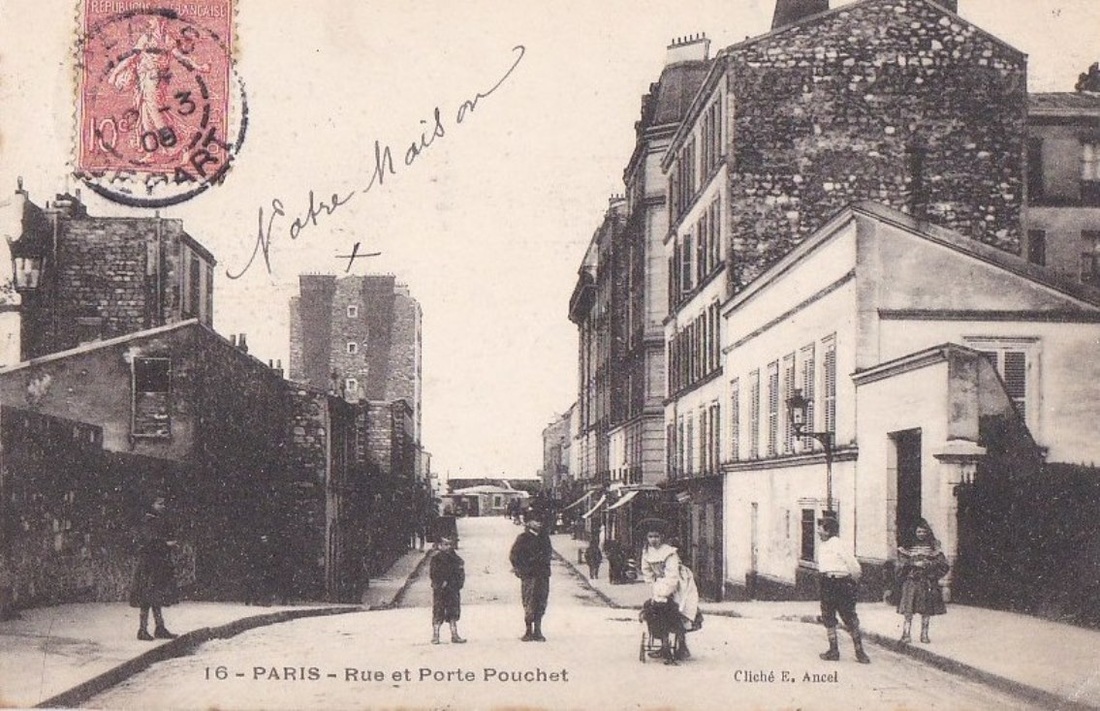a gateway out of Paris c.1910
|
For a while the Danish Film Institute displayed on its website a four-minute fragment of a 1910 Gaumont film, unidentified but attributable to Feuillade because his regular actors Renée Carl and Clément Mary (who will later be a star as 'Bébé') are recognisable among the cast. The cast also includes René Navarre (later to be 'Fantômas') and Clément Mary's sister Alphonsine - that is she holding on to the back of the car, above - as further evidence that this is a Feuillade film.
|
The fragment begins with titles that read '2. Akt' and 'paa sporet' ('on the trail'). We then see a small girl follow a man and a woman to a hideout where she observes them forging coins. She fetches the police and after a violent struggle the two are arrested. At the end of the fragment she meets up with the small boy. They are brought by two policemen to the home of the police inspector.
The obvious problem of identification is the film itself, but of course what first preoccupied me were the locations. The zone-like area where the forgers' have their hideout is beyond identification, I think:
As is this entrance to a building:
But the street on which the forgers' take a taxi is clearly one of those alongside the parc des Buttes Chaumont - the rue Botzaris, the rue Manin or the rue de Crimée:
What interests me most is the gateway by which they leave Paris. Narratively, this is a marker separating the familiar city from the strange and dangerous banlieue:
|
Topographically, this is one of the fifty-eight roads through the fortifications that surround the city. These are indicated on this 1911 map of Paris (which can be scrutinised in detail if you click on it). Identifying which is shown in the film should be simple enough since most were photographed by postcard-makers in the first years of the century, and all were photographed by Charles Lansiaux just before the demolition of the fortifications, c.1919-20.
|
Here is a gallery of prewar postcards, showing all but one of those gateways through the city walls (I can't find a postcard of the Porte de la Plaine). The collection begins at the porte de Saint Ouen, on the westerly edge of the 18th arrondissement, and goes clockwise round Paris to end at the easterly edge of the seventeenth:
And here, in the same clockwise arrangement, are fifty-eight of those gateways photographed by Lansiaux:
Generally, the architecture and fittings of the gateways are of a standard type and it can sometimes be hard to tell one from another, but after long scrutiny I was able to conclude that the gateway in the Feuillade film is the last in each of these compilations, the porte Pouchet:
This came as something of a surprise. Five kilometres from the Cité Elgé, the porte Pouchet is certainly not the nearest gateway to the production base, and I can't see why they would film there rather than at, for example, the nearby porte des Lilas, as here in the 1908 Gaumont film Un achat embarrassant:
Or at the even nearer-by porte du Pré Saint Gervais, as here in the 1912 Gaumont film L'Enfant de Paris:
I have no explanation, just a location that goes against the rule of least effort that is usually applied by studio-based filmmakers at this time, whereby the nearest doorway, the nearest café, the nearest shop, the nearest street, the nearest staircase, the nearest bridge, the nearest park and - usually - the nearest gateway out of Paris is the one they will film, if what they want to film is just a doorway, a café, a shop, a street, a staircase, a bridge, a park or a gateway out of Paris.
As for identifying the film that uses this location, Francis Lacassin makes that very easy, giving a summary of the plot of Louis Feuillade's Le Louis de vingt francs, from November 1910:
|
|
Little orphan Pierre has only one friend, the flower-seller Mireille. To earn his lving he sells newspapers. A con man gives him a false twenty-franc coin, with which Pierre treats Mireille to an orgy of chocolate eclairs and choux buns, after which the patissier has Pierre arrested for tendering false money. Mireille seeks out the real forger in the crowd, finds him and follows him to the workshop where he and his accomplices operate. Mireille exposes them and even saves the life of the police inspector, at the moment of their arrest. The grateful man adopts the two children, who will finally know the joys of family life.
Francis Lacassin, Louis Feuillade, maître des lions et des vampires (Paris: Bordas, 1995), p.121 (my translation) |
[note: the Danish Film Institute now gives the title of the identified film.]
sources
Charles Lansiaux's photographs of the fortifications can be found in the Collections photographiques at the Archives numérisées de Paris. The site also reproduces maps of the fortifications showing, for most of Lansiaux's photographs, the position from where he took them. Here is the section of the map showing the porte Pouchet, and photograph 165, a view through the porte towards Paris:
Postcards of the gateways through the fortifications can be seen (and purchased) at e.g. Delcampe.net. Here is a very nice view of the rue Pouchet, in Paris, with the porte in the distance:
